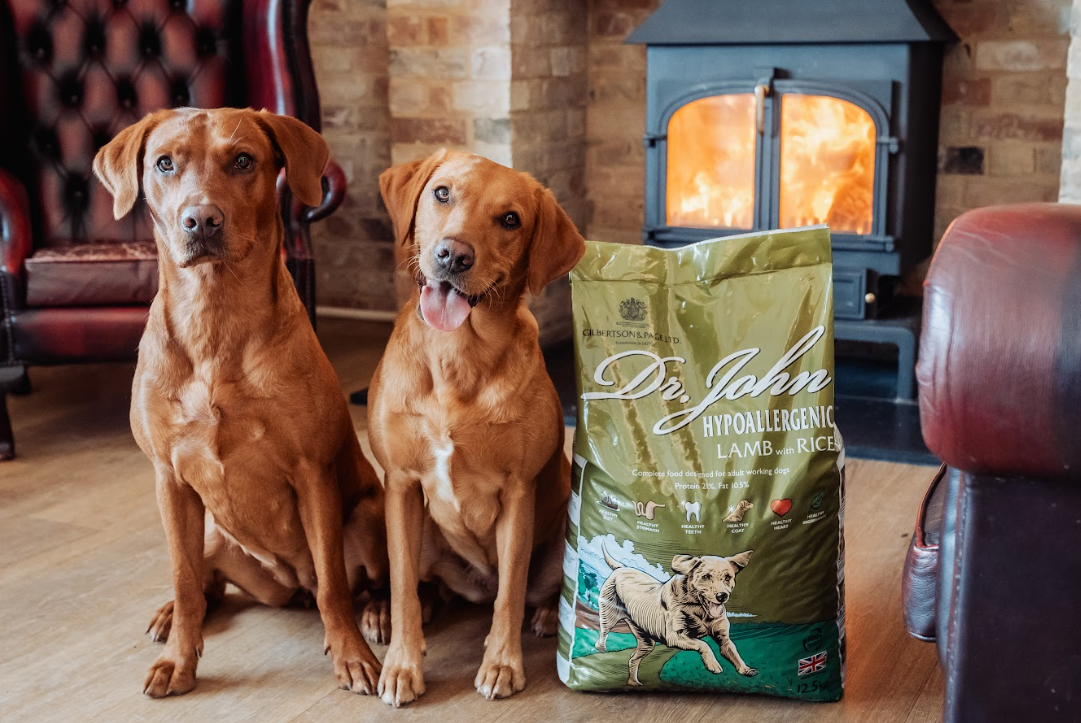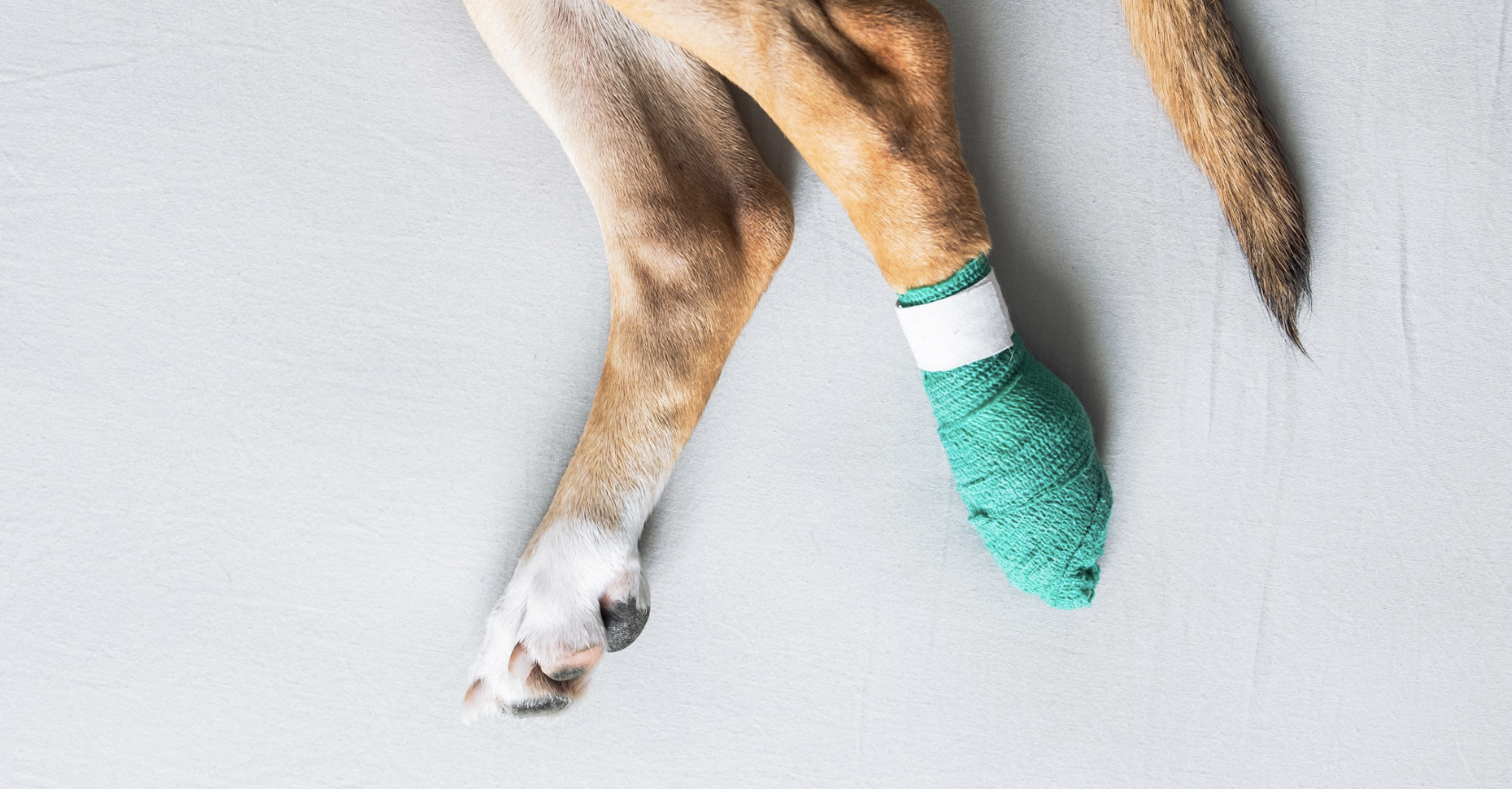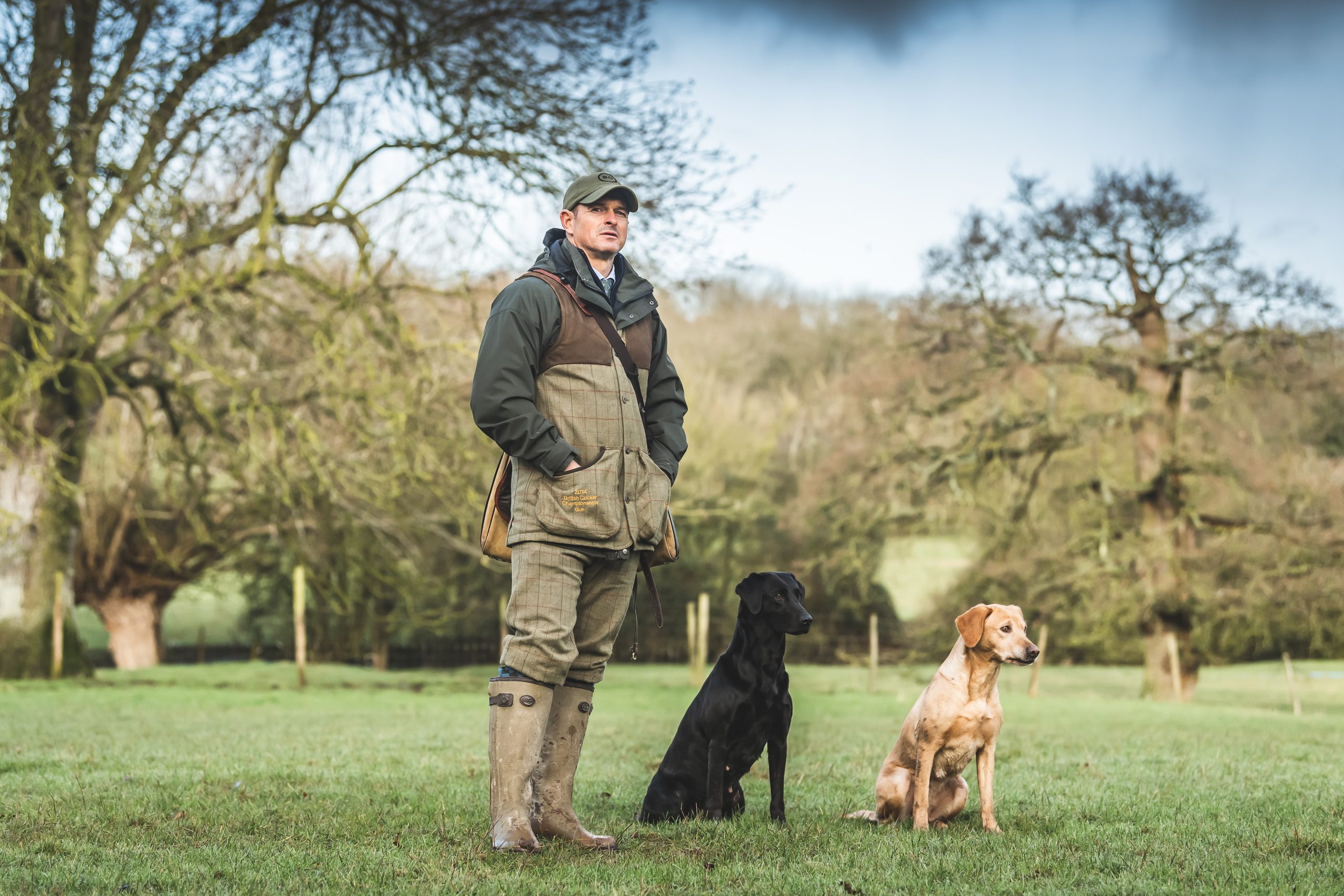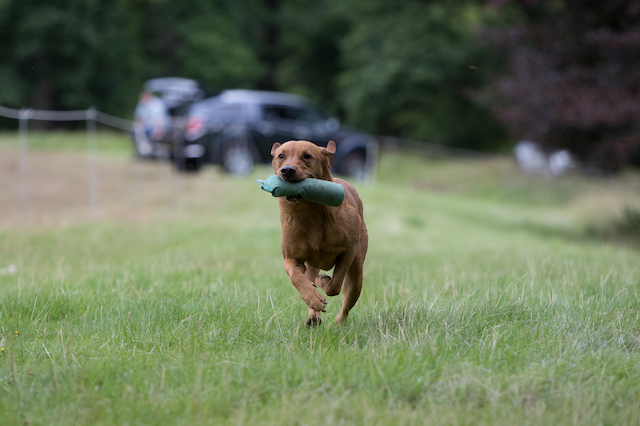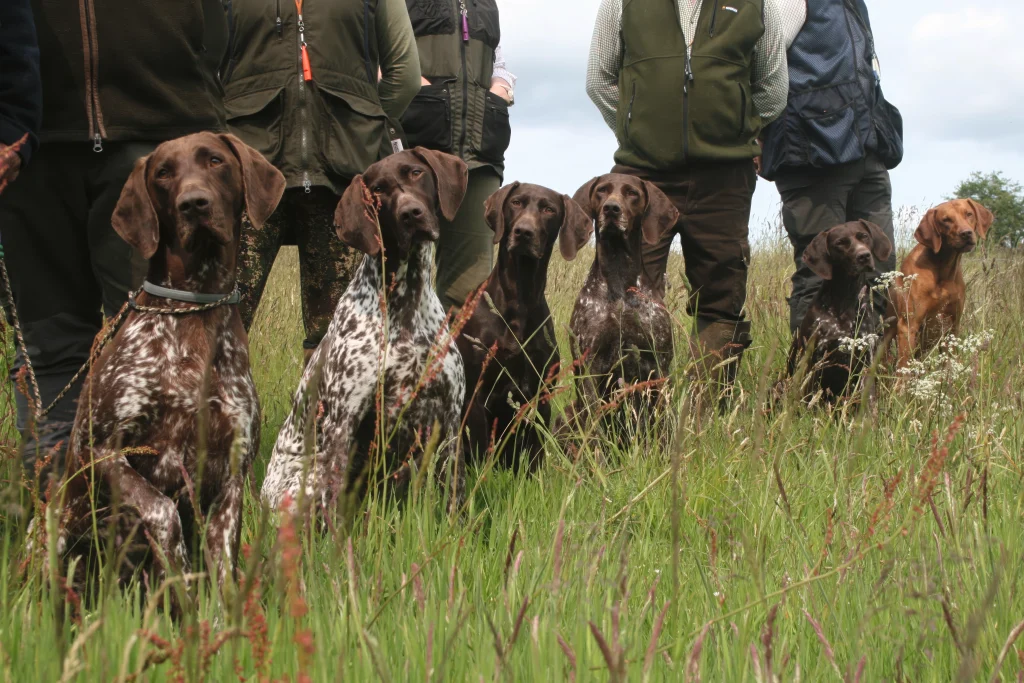Hot tips for success at the summer shows
The show season involves lots of opportunities for novice and experienced handlers alike to test their dogs. Ian Harford consults a team of experts for some advice on how to approach these events.

As dedicated fieldsports enthusiasts we undertake the annual pilgrimage to one or more of the numerous country fairs staged across the country each summer, often with the entire family in tow – including the dog. Oppressed by the sheer volume of people elbowing us out of the way, desperate to purchase yet another set of chrome water bowls, we wait patiently for the opportunity to sneak away from the hustle and bustle of shopping aisles for a quieter, more reflective space. These spaces are often filled with whistle blasts, enthusiastic calls and frantically waved arms as rocket-propelled labradors hurtle with pinpoint accuracy towards a bright-orange dummy that appears little more than a pin-prick on the horizon.
We watch with envy and amazement as intensely-focused handlers run their dogs through a series of seemingly impossible challenges in a working test or gundog scurry. We observe in disbelief at how easy they make the process look, stopping their charge on the whistle and turning it seemingly on a sixpence. We glance down at the unceasingly enthusiastic, but habitually errant spaniel looking excitedly in our direction and wonder ‘Why can’t you do that?’
The door is open
But we all know that becoming an expert in anything doesn’t happen overnight. It takes time to learn the basics, and dedication to perfect the craft. For many years, the route to recognition within the gundog world came exclusively through a consistent track record of elite-level performance in field trials and working tests. Indeed, these spectacular tests of handling and behaviour in closely reproduced working simulations still carry the same deserved prestige and cachet for handler, breeder and bloodline, but there are now more ways than ever for the ‘everyday enthusiast’ to get involved.
Handlers across the country will spend their weekends competing in a multitude of gundog scurry competitions. But this is not a closed entry book. It could be that you’re a committed picker-up during the shooting season or perhaps your lab spends its winter months camped out in front of the Aga; either way there’s never been a better time to get involved in a season of exciting competitive action and establish yourself as a major player in the new gundog world order – and it’s easier than you might think.
Beginner’s Pluck
To the uninitiated, my favourite analogy of a gundog scurry is ‘Space Invaders for dogs’. Those born from the ’90s onwards might not recognise this iconic arcade game, but in effect it’s all about exciting, quick-fire fun for both dog and handler. In its most basic form, a dummy is thrown and the handler must instruct their dog to retrieve the dummy in adherence to the rules of the challenge, usually against the clock. Scurries can feature multiple retrieves and may include other elements such as obstacles and distractions, testing the fundamentals of dog control and behaviour. Here’s how a typical scurry might work:
- Dog and handler are positioned in the start box.
- The dog should be steady but may be restrained if necessary.
- One or more dummies will be thrown or launched into the scurry arena.
- Handler is instructed which order the dummies must be retrieved.
- Timekeeper starts the clock when the dog is sent and leaves the start box.
- Handler must remain in the box and control the dog with a whistle, calls and hand signals.
- For multiple dummies, the clock will be stopped in between retrieves when the dog has returned to the start box.
- The dog that retrieves the dummies in the fastest time, in the correct order, and without infringing the rules, will be the winner.
LEARNING THE BASICS
It can be a little daunting for those new to scurry competitions to step into the box for the first time, but it needn’t be. Everyone watching wants you to do well (Ed. Is that true?) and will cheer enthusiastically whether your dog makes the perfect retrieve or stops halfway to answer the call of nature. The gundog community is welcoming and supportive, so just relax and enjoy yourself. But to help build your confidence, we’ve approached some of the UK’s best recognised scurry handlers and gundog trainers to give their top tips for success.
HOWARD KIRBY – MULLENSCOTE GUNDOGS
The most important skill to master for scurry success is getting your dog to stop on the whistle. Once you have the dog’s undivided attention, you can deliver clear instructions and build confidence. Get the stop whistle right and you’re in with a chance. But this requires practice and patience. Do not allow your dog to ignore the stop whistle as they will become ‘deaf ’ to it. Remember, always reward your dog for stopping. This can be either praise or perhaps a treat as this helps to reinforce this critical behaviour.
BRODY CHEQUER – GUNDOG CHAMPIONSHIP WINNER 2013 & 2018
Firstly, remember there’s nothing to worry about. For non-competitive scurries no one is judging you, so have fun and enjoy the experience. All the top handlers went through the exact same thing when they started, it just takes time, patience and practice. On the return run, encourage your dog to come back at a faster speed. You don’t necessarily need to make lots of noise with your voice or whistle, just crouch low, offer open arms and gentle praise.
SHANNON HARTREE – ELITE SCURRY COMPETITOR
Always end on a positive. If something goes wrong part way through or towards the end, it doesn’t matter, and you want to keep the experience fun. Take your dog to a quiet area and practice a simple sit and stay, walk away and back to your dog, or perhaps a straight out and back seen retrieve. Be sure to give a reward at the end of the session and you’ll be ready to go again next time. If you overwork or put unnecessary pressure on your dog, you will risk taking away their enjoyment, which will inevitably slow them down.
Into the big league
Once you have mastered the early stages you might think about challenging for the title. For instance at the Midland Game Fair in 2019 Vikki Stanley was crowned the winner of the Chudleys Gundog Championship and received a £2,000 cash prize and engraved trophy. However, before you consider entering top-level competitions there are a few more areas you might need to focus on to build your all-round game.
SHANNON HARTREE
Teach your dog to run in straight lines, so wherever you point your dog it should run that way. Start with a short distance and build it up as the dog’s confidence grows. In a scurry, if your dog runs straight to where you pointed and gets the dummy it is obviously the fastest route from A to B. The dog will not be hunting where there is no dummy and you won’t have to waste time by stopping and re-directing him/ her. Start with short, easy retrieves and gradually make them more difficult. Then try it in open ground, starting easy again and build it up.
HOWARD KIRBY
Study each scurry before your turn arrives. Watch how the dogs ‘work the ground’ to see where they hit scent for particular dummies. Once you know this you can set your dog up to take a particular line, which will make it easier and quicker for him to find them. Think about what your dog is able to see while queuing. Sometimes what the dog watches in front of him will be helpful as he will be marking the dummy you want him to retrieve. However, be careful that he is not locking onto a dummy from an adjacent or nearby launcher, as this may spoil your run.
BRODY CHEQUER
Watch the handlers that are getting it right. Observe the way they set their dogs up, take note of the order they choose to pick dummies up in multi-retrieve situations. Make sure you know your own dog’s strengths and weaknesses and try to look at each scurry from their point of view. Don’t over handle your dog as this can be confusing and creates panic. Take the time to teach your dog to work to a hunt whistle or verbal command. If you put too much pressure on the dog with over handling, it will distract and slow them up.
BRINGING IT ALL TOGETHER
Gundogs that reach the top in these events will be driven, fast and enthusiastic, and absolutely in tune with their handlers. To compete with the best, you and your dog need to be aligned in perfect harmony. This requires considerable time, effort and dedication. Don’t expect to become a ‘master handler’ overnight. Remember, scurrying is meant to be a fun experience for you and your dog. Spend as much time as possible speaking to handlers at every country fair you attend. You’ll gain valuable information and advice that will only help better your own skills.
Related Articles
Get the latest news delivered direct to your door
Subscribe to Gundog Journal
Unlock the full potential of your working dog with a subscription to Gundog Journal, the UK’s only dedicated magazine for gundog enthusiasts. Published bi-monthly, this authoritative resource delivers expert training advice, in-depth interviews with top trainers and veterinary guidance to help you nurture a stronger bond with your dog.
With stunning photography and thought-provoking content, Gundog Journal is your essential guide to understanding, training and celebrating your working dog.
Save 10% on shop price when you subscribe, with a choice of packages that work for you. Choose from Print & Digital or Digital only with each journal delivered directly to your door or via the app every other month, plus access to past issues with the digital back issue library.



